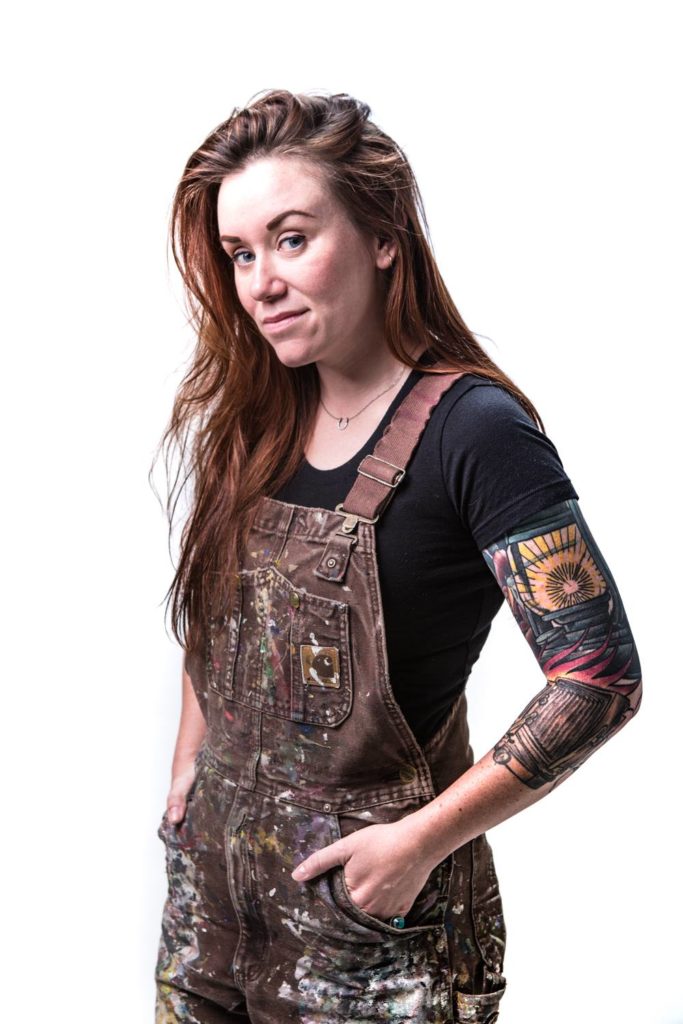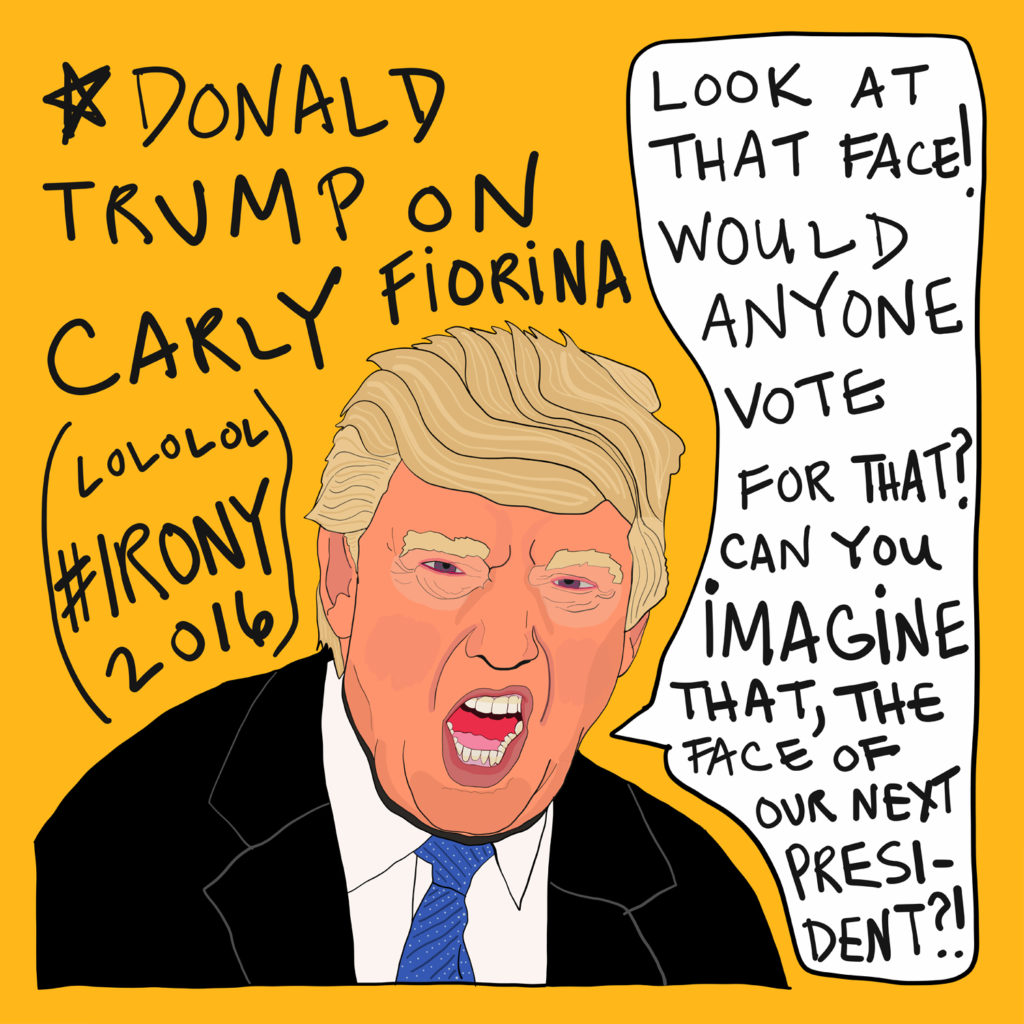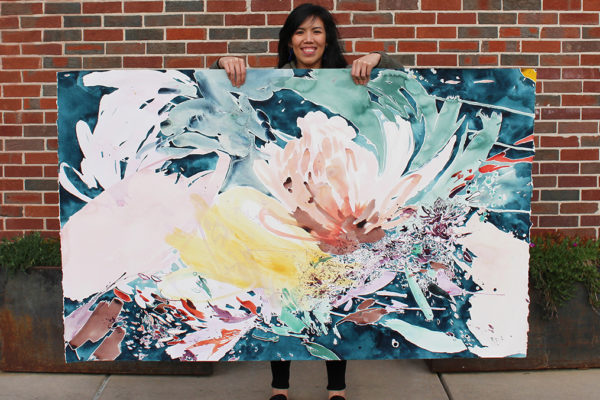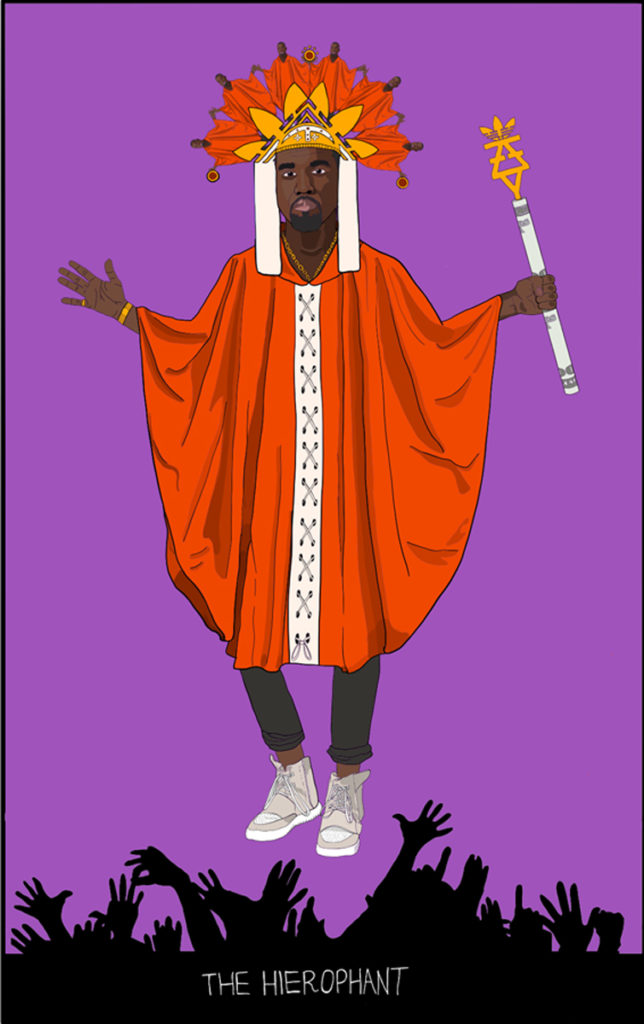 Jack Michael hasn’t always been an artist. The 28 year old moved from New York to Atlanta just over a year ago for her now husband’s job (he’s a dermatopathologist). After settling in College Park, she joined the crew at screenprinting company Danger Press. Eventually, the Chickamauga, Georgia native, and Sewanee: The University of the South grad ventured out on her own with print studio Lucky Hand Press and her gallery, Paper Plane, all atop her fine art creative practice.
Jack Michael hasn’t always been an artist. The 28 year old moved from New York to Atlanta just over a year ago for her now husband’s job (he’s a dermatopathologist). After settling in College Park, she joined the crew at screenprinting company Danger Press. Eventually, the Chickamauga, Georgia native, and Sewanee: The University of the South grad ventured out on her own with print studio Lucky Hand Press and her gallery, Paper Plane, all atop her fine art creative practice.
Michael chatted with CommonCreativ about #LiftCollegePark, how she juggles all of her artistic endeavors and the “zombie effect” of the internet.
CommonCreativ: What did you want to be when you were younger?
Jack Michael: I think that answer changed frequently. The earliest thing I can remember wanting to be is a paleontologist. I blame the 1993 Jurassic Park movie for that. They made science and near-death experiences look so cool.
CC: What sparked your interest in art?
JM: A middle school trip to The Hunter Museum of American Art in Chattanooga, Tennessee. At first, I didn’t find it very interesting…but there was this corridor where you rounded a corner, and BOOM: there was a massive cropped portrait. The face was sort of masculine, but not totally. It seemed sad, but maybe just resolute, or watching. From 30 feet away, it looked so smooth. It made me shiver. I’ve never really been religious, but I thought to myself — at age 12 or 13 — “If there is a god, then this is his or her face.” As I got closer, I saw thick brushstrokes, paintbrush hairs…a much more human mess than what I first saw. I read the label. It was an encaustic portrait by Tony Scherman titled “Il Mostro.” It was the face of Napoleon Bonaparte. I’ve been in love with art’s power to surprise and up-end assumption ever since.
CC: Tell me about your fine art creative practice.
JM: I think of myself primarily as a printmaker, and anything else that I do — illustration, installation, sculpture, bookmaking — is an armature or container for the printmaking process. The nature of printmaking — the production of multiples, the ease of dissemination, and connotations linked to advertising and propaganda — is essential to the work. I explore personal and historic tensions caused by modern technology through consumer brands, social media, celebrity, nature, and personal mythology. I’m especially focused on how the values, anxieties, and beliefs of human beings have changed since the advent of the Internet.
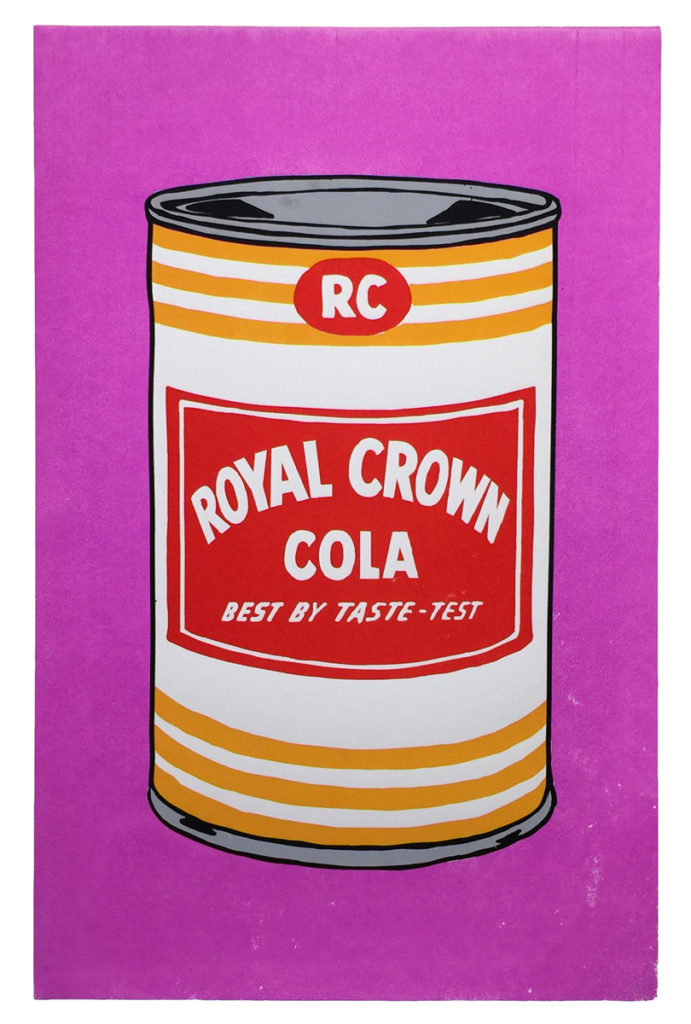 CC: How does the internet affect your work?
CC: How does the internet affect your work?
JM: I don’t consider myself a “post-internet” artist. Even though my work explores issues related to the internet, I rarely make internet-based work. The internet contributes, but it’s never where the work lives. I get in the studio every day and make work out of paper and ink and tree branches and thread and found objects, specifically because I am terrified of humanity’s assimilation into the binary din of the internet. A human is complex and evolving; but in social media, we are fixed snapshots, archetypes, and products — don’t show your complications. Information on the internet is constantly and rapidly changing, but there forever; humans are much the opposite. This tension is now squarely fixed to human history; it has changed the way we communicate, how we live with the Earth, and how we define ourselves. So for me, daily creative practice is full of both creative exhilaration and overwhelming tension. It involves a lot of very introverted reflection and critique, and conversely a lot of surfing social media and the web to study patterns of interest, identity, and emotion.
CC: What about online research?
JM: Too much time on the Internet makes me listless, almost a zombie. I get overloaded with tons of information, but find myself still seeking knowledge. At the end of the day, all of that research and manual work ends up on a very ephemeral substrate: paper. There might also be a certain level of irony to it all, in that most of the work comes out as multiples, and ends up for sale through Internet retail outlets. In a way, some of the products that get sold through Lucky Hand Press are better examples of my fine art creative practice than the things that I make only for galleries and collectors, precisely because that extra layer of wholesale/retail is an unintentional critique come full-circle. It’s not performance art, but it’s something beyond the visual.
CC: How did the idea for Lucky Hand Press come about?
JM: When we moved from the South to New York City, I took a high-paying, high-profile digital communications job with a whiskey company. I was well-fed and miserable. When you grow up poor, no one warns you about the soul-sucking side of upward mobility. At the end of my creative and emotional rope, and with very little in savings, I decided to leave my glamorous-from-the-exterior gig to take an internship as a studio assistant. I wanted to make things again. My dad always told me that the most important thing in life was to be happy, and dammit, I wasn’t going to let him or myself down. That might sound like either privilege or stupidity talking, but honestly, it was just desperation and fear about wasting precious time.
After a few weeks, I landed an unpaid internship at Gowanus Print Lab + Park Slope Press. I had almost no printmaking experience — but they took a chance on me anyway (thanks guys!). About a month later, my boss quit with no notice. The owner of the company asked me if I wanted to take over operations. I said yes, and figured out the rest as I went along. Part of being on staff was being a keyholder for an amazing public print lab. I spent every spare minute printing. The first print I ever made was a Pop-Art-esque RC Cola can, from an original illustration. I’m really glad I was alone in the studio, because when I laid down the key line, I started crying. I was so overwhelmed with joy, relief, energy, and purpose. That was the first print in what is now The Southern Series.
That series started as a way to tell stories about the South while I was living in New York City, to reinforce and remember my own personal mythology. It became the foundation for a dream. Every day, I’m so grateful for the crucible of corporate stress that drove me into the arms of printmaking.
CC: What all does LHP offer?
JM: A lot! About half of business for LHP ends up being editorial, product, or project-based illustration. Two of my favorite recent gigs have been illustrating dozens of map icons for a Perkins+Will LCI assessment of the Turner Field neighborhoods, and illustrating a poster for the Decatur Book Festival. People always ask for illustrated and printed wedding invitations, but unless it’s a really cool concept and a chill client, custom stationery isn’t my thing. My focus for printed goods is more on bringing life to in-house concepts. The Southern Series is the flagship line of prints, they’re currently sold via The Bitter Southerner General Store. Projects currently underway include an illustrated series of Donald Trump’s worst quotes (which is being included in a national ‘zine exchange portfolio), and a hand-printed deck of celebrity tarot cards. Those and more will be available via LHP e-commerce in time for the holidays. The studio in College Park is set up to print silkscreen, pochoir, “kitchen” lithography, and monotype, with letterpress coming soon. We also have a crow’s nest loft in the studio that will be offering short-term affordable residencies for emerging artists, hopefully starting after the new year.
CC: How has it been for you as a gallerist as well?
JM: Paper Plane Gallery has been an amazing roller coaster—and the learning curve is steep! But a supportive community of gallerists, artists, collectors, and critics has made all the difference. I only had three weeks to take the gallery from concept to opening night. When the fresh wall paint was still drying on the day of our grand opening, I was seriously questioning my life decisions! But we had a great show with work from all over the U.S. And I’ve been lucky enough to work with artists and patrons who are patient as I work out the kinks, and I hope that everyone knows how grateful I am for that. Some people are upset that we almost exclusively feature printmaking and works on paper, but that’s what I know how to curate, so that’s what we show. I hope other galleries will come to College Park in the near future, especially ones focusing on sculpture, installation, and fine craft. You can never have too many galleries!
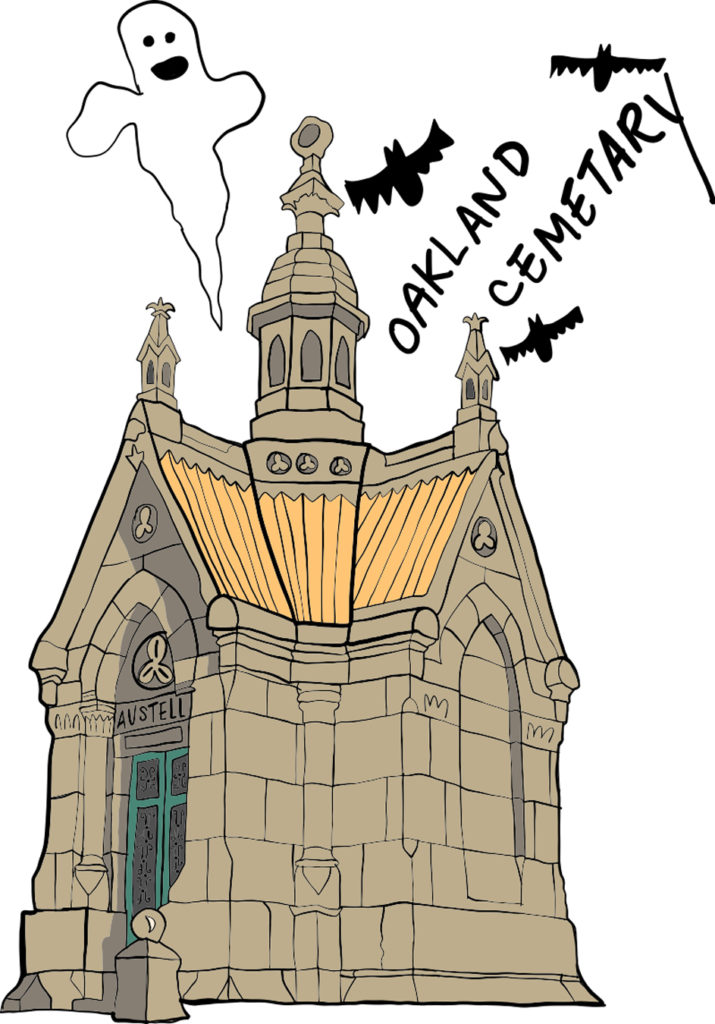 CC: Tell me about the team you work with for the gallery/LHP.
CC: Tell me about the team you work with for the gallery/LHP.
JM: For now, LHP is a one-woman show. If there’s some truly massive job that needs an extra set of hands, I look to Danger Press to help out. I love that even though I’m not part of the Danger Fam anymore, they still let me come in and run my jobs alongside the friends that took me into their shop when I first moved to ATL. They’re rockstars. As for Paper Plane Gallery, I started it solo — albeit with TONS of support from my husband. Now, I have an amazing intern named Kat Cockey. She really knows her stuff, and the wheels wouldn’t get greased without her.
We’ll hopefully be looking to expand the team and add a full-time position besides me. There’s also the ever-changing team of people that I think of as my part-time mentors (and they may not even know how much they help): Whitney Stansell, Robert Brown, Yu-Kai Lin, and at least a dozen neighbors in College Park have given guidance on everything from selecting a jury to installing a hanging system for brick walls to scheduling shows. Truly, it takes a village.
CC: How do you intend for your gallery to help transform College Park?
JM: In my mind and heart, most of the transformative good seen in College Park has been going on for a long time, and I’m just here to add a little extra energy. If there’s any way the gallery can further transform College Park, I hope it’s that it shows people that the good times are here to stay, and that art-related enterprises transform communities and bring life to fellow merchants.
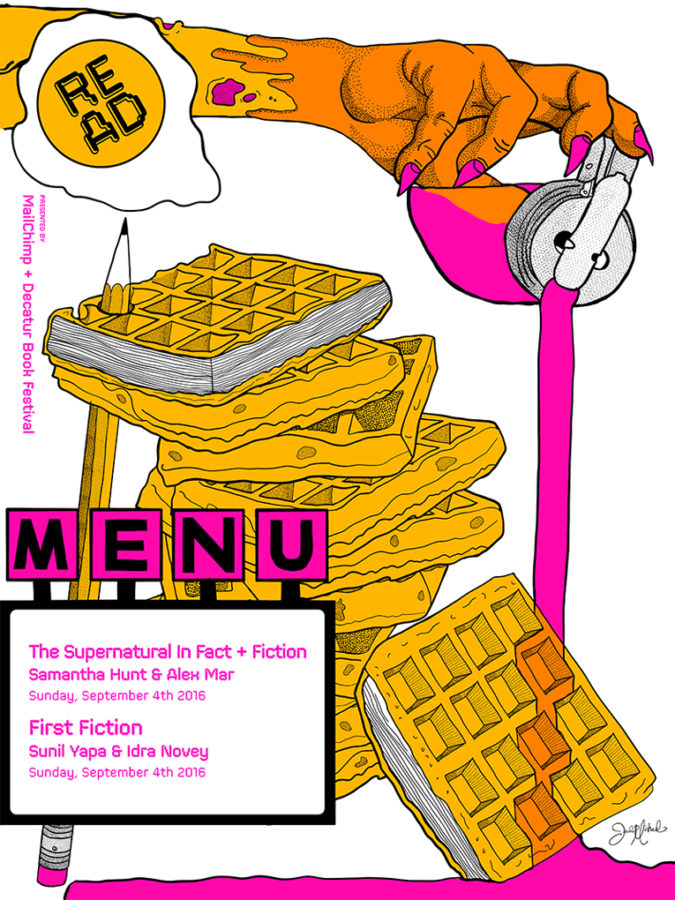 CC: What do you think about the ATL arts scene in general?
CC: What do you think about the ATL arts scene in general?
JM: I’m still figuring it out, but I’m loving it so far! Like I mentioned earlier, it’s much more open-door than the NYC scene…yet at the same time, it’s also more critical (in a good way). ATLiens are educated skeptics with uncommonly open minds and hearts. People don’t turn up their noses before they give something a chance, and that’s part of why I think ATL is going to start edging toward NYC status as a serious visual arts city in the near future.
CC: What projects do you have in the works?
JM: I have a color-coded calendar that pretty much looks like an entire Pantone book. 1: The gallery, along with All City Murals, is an organizing sponsor of the #LiftCollegePark public art campaign. Thanks to the generosity of Mr. Yoyo Ferro, who installed an amazing two-story wraparound mural on Main Street, and C4 Atlanta for being our non-profit fiscal sponsor, we’ve officially kicked off the initiative. We’re working with corporate sponsors, crowdfunding, and local institutions to bring local and national mural artists to College Park for what will likely result in about $100,000 of public art value added to our community. 2: The gallery calendar is now fully booked through the end of our lease (June 2017).
CC: Why do you make art?
JM: I’ve done many other things. I’ve been a graphic designer, a nationally-ranked bartender, a model, an inner-city schoolteacher, homeless and unemployed, a barista…the list goes on. I used to just look for a paycheck and hope that purpose showed up. But I am an artist because it’s the only vocation that makes me feel like I have a purpose. It’s the only way I have of making a mark that might last longer than me. And also, I can’t not do it. Take me away from my studio, and I am insufferable.
CC: Anything else you want readers to know?
JM: If any artists out there are thinking about starting galleries, DO IT. Want to curate a pop-up show? Do it! Don’t just think about it. It’s terrifying and awesome and immeasurably meaningful — not just to your own creative practice, but to the community around you. Leap, and the net will appear. Commit, and figure out the rest along the way. You can be one of the people that fixes the bugs in the art system. If you want more shows on your résumé, create them. If you want more artist’s talks, give them. If you need help, email me. I’m always available for bourbon and brainstorming.

